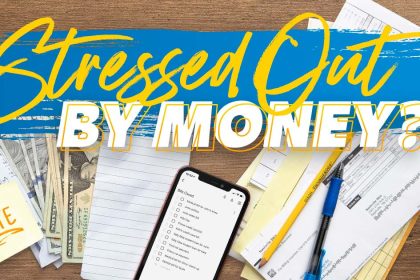Credit Sesame discusses the approach of an economic turning point for the United States.
Economic cycles tend to consist of a series of long-running trends. The hard part is identifying the turning points. According to data from the National Bureau of Economic Research, since the end of World War II, the average economic expansion has lasted more than five years, and the average recession has lasted about ten months. Given those are lengthy periods, people can get used to the economic status quo fail to anticipate the next turning point. However, it is those turning points that can have the greatest impact on your finances.
Recent economic data suggest that a turning point may be in the works.
The status quo: inflationary, debt-fueled growth
Since recovering from the initial shock of the pandemic, the economy has grown in 13 of the past 15 calendar quarters. Employment has grown for 41 straight months. However, this growth has not enjoyed smooth sailing. It has been accompanied by a rise in inflation. As measured by the Consumer Price Index, year-over-year inflation peaked at 9% in mid-2022. Though it has since subsided to 3.4%, this is still well above the Federal Reserve’s target of 2%. As a result, the Fed has raised interest rates in an attempt to cool off inflation by slowing consumer spending.
Consumers have mostly continued to spend, and much of the spending has been financed by borrowing. According to the latest Household Debt and Credit Report from the Federal Reserve Bank of New York, total consumer debt has increased by $3.39 trillion over the past four years. This is troubling.
Signs of an economic turning point
While there has not been a dramatic shift in the economy, there are some subtle indications that things may be starting to change:
- Job listings are falling. While employment has continued to grow, employers are recruiting less frantically than they were a couple of years ago. The total number of job openings peaked at over 12 million (a record high) in early 2022 but has since fallen by over 4 million. Laying off employees is disruptive, so employers tend not to do it till it’s absolutely necessary. Before reaching a point where layoffs are necessary, one of the first signs that employers reining in their payrolls is when hiring slows. For example, leading up to the Great Recession, the number of job listings started dropping ten months before total employment did. So, while employment has continued to grow, the steady drop-off in job openings suggests that there may be some weakening in the job market.
- Consumer borrowing is slowing. Despite higher interest rates, consumers have borrowed heavily to fund their spending. However, the appetite for borrowing may be slowing. The year-over-year percentage increase in total consumer borrowing is now under half the peak at the end of 2022.
- Home sales are weakening. A low inventory of properties for sale takes some of the blame for the sluggish pace of home sales over the past year or so, Also, recent figures from the National Association of Realtors show that pending home sales have continued to decline despite more properties coming on the market. Pending home sales are a leading indicator of housing market conditions, so this drop-off may signal an emerging trend. Slower home sales may indicate that higher interest rates have begun to affect consumer behavior.
Preparing for change
These observations are insufficient to conclude that the status quo of inflationary, debt-fueled growth has changed. However, they do suggest some of the momentum behind those conditions is fading. This could signal greater changes to come.
If employment and consumer spending are likely to weaken, here are some things consumers may wish to consider.
- Go ahead with planned credit applications. Lenders have already begun tightening their standards. If the economy slows it could become even harder to get a loan. If you are planning a major purchase such as a home or a car, you might want to act soon.
- Work on improving credit. Tougher credit standards could make it harder to get approved for loans and credit cards in the near future. Taking steps to build your credit now could keep your options open for longer.
- Trim budgets. An economic slowdown could threaten incomes. Reining in spending makes room in budgets for possible leaner times.
- Assess job security. In recent years, workers have had the luxury of being in high demand. If this changes, employers have more choice in the workers they want to hire and retain. This would be a good time to ensure your skills are up-to-date and your performance is all it could be.
- Build an emergency fund. The proverbial “rainy day” may be coming. Save while you can to prepare for it.
This is not a doom and gloom forecast. Rather, we may be seeing a normal turn in the economic cycle. This does not make it any less of a change, and consumers are well-advised to be prepared for a change in the economy.
If you enjoyed Is the U.S. approaching an economic turning point? you may like,
Disclaimer: The article and information provided here are for informational purposes only and are not intended as a substitute for professional advice.
Read the full article here


















